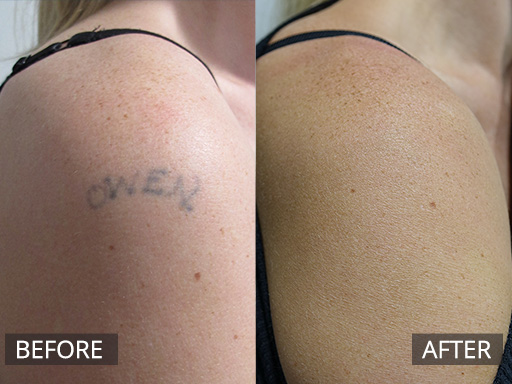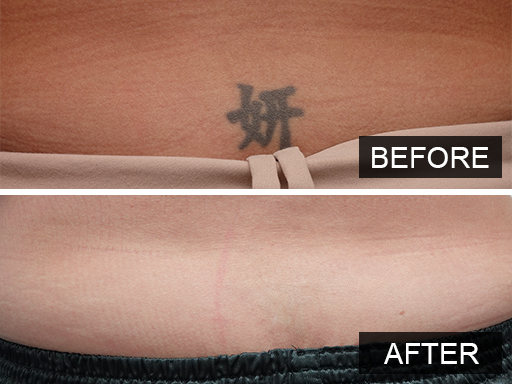Tattoo removal may be considered for patients wanting to address unwanted tattoos. At The DOC Clinic in Hoppers Crossing (near Werribee and Point Cook), Dr Ed Omarjee offers laser tattoo removal using modern systems. The treatment process involves applying laser energy to the tattoo ink, breaking it into smaller particles that the body gradually processes. Sessions are spaced at intervals, with timing and the number of sessions determined during consultation.
Disclaimer
All treatments require a formal consultation with Dr Omarjee prior to any treatment. During this consultation, patients' concerns are carefully assessed, and a personalised treatment plan is developed. This includes discussing the nature of the proposed treatment(s), alternative treatments, potential risks and relevant complications, aftercare instructions, and the costs involved. It also allows time for patients to ask questions.
Frequently Asked Questions
What can I expect on the day of the procedure?
At our laser tattoo removal clinic, Dr Ed Omarjee will advise you on the timing of sessions based on your skin type and the progress observed. If there is discomfort, cooling measures may be applied. Additional steps to support comfort and safety can also be discussed during your session.
Following the procedure:
- The treated area may appear red or swollen for a short time.
- Protect the skin from sun exposure between sessions.
- Aftercare guidance will be provided during your appointment.
How does laser tattoo removal work?
The RevLite Q-Switched Nd:YAG laser delivers specific wavelengths of light in very short pulses to the targeted area. This process acts on the tattoo ink, breaking it into smaller particles that the body gradually processes. This allows your immune and lymphatic system to destroy and remove the tattoo ink from your body.
How many treatments will I require?
The number of treatments varies depending on factors such as ink type and colour, tattoo size and location, medical history, and lifestyle. These considerations will be discussed at your consultation.
How much does it cost?
Costs depend on factors such as tattoo size and the number of sessions needed. An estimate will be provided following your consultation.
How often will I need treatments?
Session intervals are usually planned at several months apart, often between 8 and 12 weeks, but this can vary. The timing will be discussed during your consultation.
Can only part of a tattoo be treated?
In some cases, laser settings can be applied to target selected areas of a tattoo. This option can be discussed at your consultation.
Can a tattoo be lightened for a cover-up?
Laser treatment may be used to reduce visible ink before a new tattoo is applied. A waiting period is recommended between the last laser session and new tattooing.
Are there discomforts associated with treatment?
Patients will experience discomfort during treatment. Cooling methods may be used to support comfort. And if needed local anaesthetic injected to areas pre laser treatment.
Will I blister and scab afterwards?
Blisters or scabs can occur after treatment. It is important not to pick at the skin and to follow the aftercare instructions provided to support healing.
Do Medicare or private health insurance cover the treatments?
Laser tattoo removal is considered an elective cosmetic procedure and is not covered by Medicare or private health insurance.
What are the possible side effects?
Side effects can occur after laser tattoo removal, and these may include:
- Whitening or darkening of the tattoo (hypopigmentation or hyperpigmentation)
- Redness and swelling
- Itching
- Bruising
- Blistering
- Pinpoint bleeding
- Scabbing
- Scarring
What colours can be treated?
The RevLite system has four wavelengths (1064nm, 532nm, 585nm, and 650nm), which allow it to target a range of tattoo ink colours. Certain colours, such as green, light blue, or purple, may be more challenging to treat.
What should I do before treatment?
Avoid sun exposure for at least four weeks before treatment. General lifestyle measures, such as staying hydrated, may also support your body’s natural recovery. Smoking and alcohol intake should also be reduced or avoided.
What should I do after treatment?
After a laser tattoo removal session, following the recommended aftercare steps is important to support skin recovery:
- Apply Bepanthen cream or another soothing agent as advised for 24–48 hours.
- A non-stick dressing may be used for the first 24–48 hours if required.
- Do not pick at any crusting or blistering.
- Apply SPF 30+ or higher to exposed areas.
- Avoid heat exposure that may lead to sweating (e.g., hot showers, saunas, spas, heavy exercise).
- Maintain hydration and follow aftercare advice provided at your session.
Medicare coverage
Medically relevant consultations usually are eligible for a Medicare-specific refund. (Cosmetic consultations are not Medicare eligible.)
Tattoo Removal
Before & After Gallery
* Results will vary from person to person and with various degrees of efficacy.







